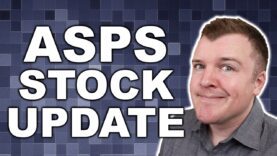Debit Spreads Explained – Bull Call Spread / Bear Put Spread
Video Summary
Advanced Options Trading Strategies: Debit Spreads
Debit spreads are one of the four kinds of vertical spreads, which can be used for affordable speculation. Buying a debit spread is a way to limit profits while making the contract more affordable. It involves buying an option and simultaneously selling another option with a higher or lower strike price, depending on the market forecast.
There are two types of debit spreads: bull call spread and bear put spread. A bull call spread is similar to buying a call option, but it provides a limit on the potential profit. The seller of the option sold at the higher strike price benefits from the change in the share price, while the buyer of the option at the lower strike price loses value.
On the other hand, a bear put spread is similar to buying a put option, but it also limits the potential profit. The bear put spread is used when the trader believes the share price of a company will decrease. By buying and selling puts at different strike prices, the trader can limit the potential loss and potential profit.
The benefits of debit spreads include reduced volatility and theta decay. The seller of the option sold at the higher strike price adjusts their loss as the buyer of the option at the lower strike price gains value.
To illustrate this, let’s consider an example of buying a bull call spread on Netflix with a one-month expiration date. The maximum loss is limited to the net debit paid, which is $450. The maximum profit is the width of the two strike prices minus the debit, which is $550.
Similarly, a bear put spread on Netflix with a one-month expiration date limits the potential loss to the net debit paid, which is $490. The maximum profit is the width of the two strike prices minus the debit, which is $510. The potential return on investment is 104%.























